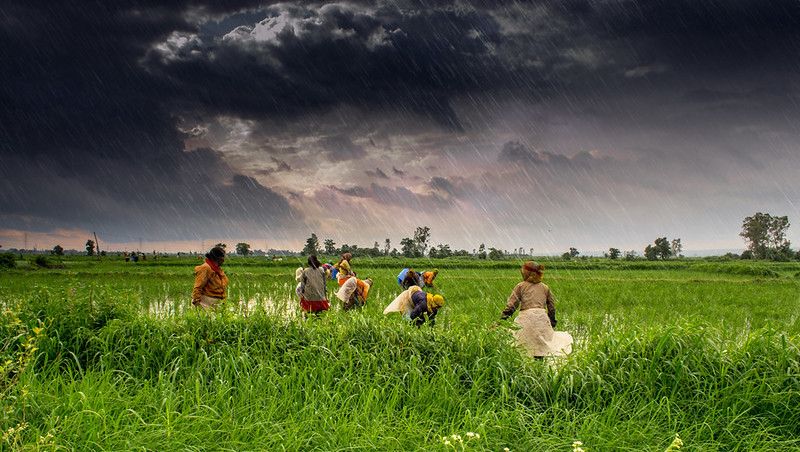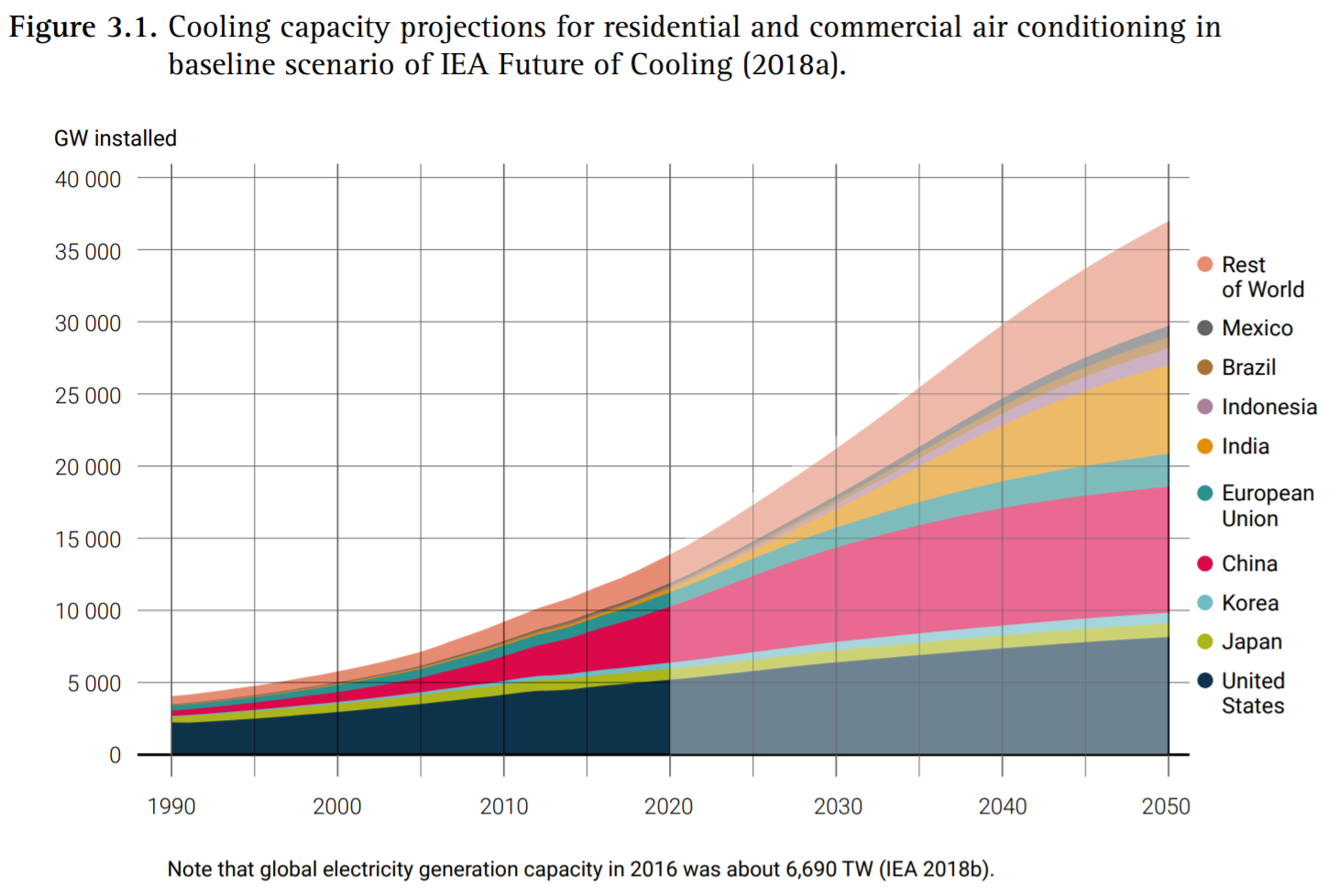#12 - The cost of keeping cool
And the quest to bring a vaccine to every home in India

Hello and welcome to this week’s edition of Lights On, a newsletter that brings you the key stories and exclusive intel on energy and climate change in South Asia.
Special thanks to all the readers that have signed up this week, hope you’ll like it here. If yes, please consider a small donation to the cause:
The dreaded threshold
- Once we have a vaccine for the coronavirus, India will need a brand new army of fridges to deliver them to every single home
- As temperatures and wages rise, more people will want air conditioning. But this ambition could cost more than we think
One million and counting. The Covid-19 tally in India is now among the highest in the world, and increasing rapidly. Soon India may be on par with Brazil and the US for number of cases, despite enforcing one of the strictest lockdowns on a population of over one billion people, early in the pandemic. With the monsoon sweeping across the country and cities shutting down again, India may become a test case of how to deal with a pandemic in a tropical climate, braving dengue and malaria, floods and heat.
Those who can will stay at home and crank up the AC. If they get sick, their chances to recover quickly will be higher if the temperature is comfortable - one of the many reasons why access to cooling in India is not a luxury, but a matter of resilience.

Farmers caught by a monsoon shower in Madhya Pradesh. Image credit: Rajarshi Mitra/Flickr
As the virus rages on, we look to the doctors working to find a vaccine. But if this pandemic has taught us anything, it’s that science is nothing if it doesn’t translate into actions on the ground. Countries that were well placed to ride it out relatively easily, due to their wealth, good infrastructure or being geographically isolated, like the US or the UK, had some of the worst Covid-19 outbreaks on record because they botched their response so badly.
Keeping the vaccine safe
It will be the same once a vaccine is found. Typically, a vaccine takes nearly six years to reach clinics on the ground once developed. At a war-time speed, it may take about a year, and India will have to embark on the monumental task of distributing a dose to every single citizen.
The largest immunisation campaign in Indian history ran in 2011, when 344 million children under five were vaccinated against polio. Now treble that number for an idea of what a Covid vaccination push will look like.
Vaccines need to be kept cool to remain effective. “In some districts, you just needed a refrigerator as big as an ice cream cooler to deliver the vaccines,” recalls Karan Mangotra, climate and energy efficiency expert with The Energy and Resources Institute in Delhi and one of the authors of a report out today on the impacts of the cooling sector on global climate targets. Assuming that the temperature guidelines remain the same, India will need similar refrigerators to the ones used for polio - just many many more of them.
A mass vaccination push against the coronavirus will demand a brand new, nationwide cooling infrastructure, a huge investment in terms of money and energy that will need to be put to good use once the pandemic is over.
India is not new to cold storage tech, but it’s traditionally been used for subsistence crops like tomatoes, potatoes and onion. Imagine how much more you could do with all those spare fridges: you could be moving perishable things like flowers, herbs or any other foods with a short shelf life up and down the country, improving revenue for farmers and food security for all.
In the short run, cooling tech is helping India brave the Covid crisis and will eventually underpin its effort to wipe out the virus. But in a hot country like India, increasing access to cooling, whether it’s for medicines, food storage, homes or malls, is generally key to development.
Double edged sword
Currently, only 8 percent of India’s urban homes have an AC, says Mangotra, “and we’re already seeing huge spikes in our peak electricity demand.” By 2035, he says, this figure will rise to almost 30 percent.
In a warming world the demand for cooling can only grow, in line with global temperatures. But it’s also poised to exacerbate climate change - both due to the emissions coming from polluting refrigerants widely used in the industry and from the (mostly dirty) energy that cooling systems need to run.

Image credit - Cooling Emissions and Policy Synthesis Report
In 2016, parties to the UN came together in Kigali, Rwanda, to agree on phasing down these refrigerants, called hydrofluorocarbons (I was there!). This move alone could stave off 0.4°C from the planet’s warming trajectory. But ACs and fridges are also energy thirsty. According to the new report on cooling emissions by the International Energy Agency and the UN Environment Programme, in 2018 alone the collective global cooling equipment used up an estimated 3,900 TWh/year, equivalent to 17 percent of the world’s total electricity demand. Air conditioning takes up the biggest slice with 2000 TWh/year, a figure that analysts expect to treble by 2050.
After Covid, there can’t be a green recovery that doesn’t include the technologies that keep us, our food and our medicines cool. India has been expecting a cooling boom for a few years now, and has taken some important steps to make it environmentally and financially sustainable. It’s one of the few countries that has a holistic Cooling Action Plan, which aims to reduce cooling demand by up to 25 percent by 2038, and its refrigerant and energy demand by up to 30 and 40 percent respectively by the same date. Through the International Solar Alliance India is also promoting technologies to match clean energy with ‘cold chains’, the processes that move perishable goods, from food to vaccines, at a controlled temperature.
It’s true that these were pre-Covid ambitions, and depending on how badly the economy will be bruised by the end of it, people’s appetite for slightly costlier technologies - such as ultra efficient ACs - may have faded despite their environmental benefits. But access to cooling has such an immediate impact on people’s lives that it will hardly lose priority. “In an agrarian society [like India],” Mangotra says, “if you can give somebody an access to the market for four more days before their items start to perish, that’s a huge benefit to their income.”
Whether the glass is half full or half empty, it’s your call.
If you’ve been forwarded this newsletter and you’d like to read it every week, you can subscribe below. Tip: if you add my address to your contacts, this email won’t end up in the spam or promotion folder!



